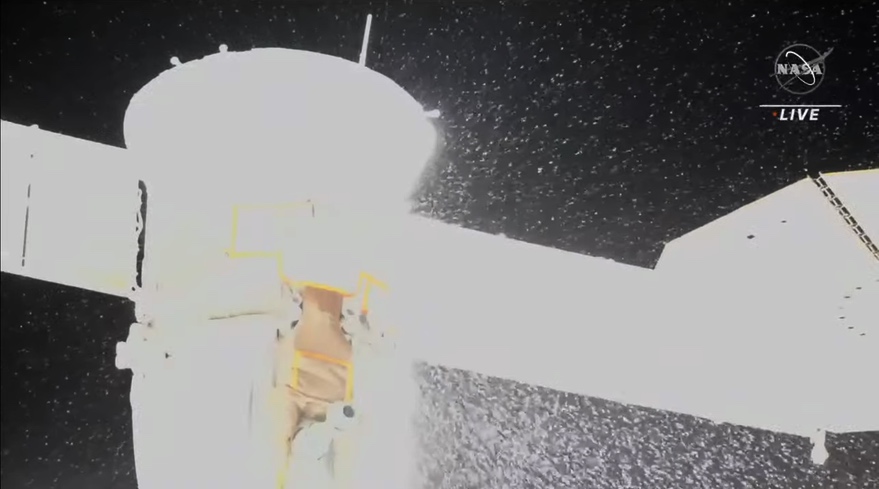WASHINGTON — As astronauts completed a delayed spacewalk outside the International Space Station, NASA and Roscosmos officials said they are continuing to study whether a Soyuz spacecraft that suffered a coolant leak can safely return its crew home.
NASA astronauts Josh Cassada and Frank Rubio successfully completed a spacewalk Dec. 22 lasting seven hours and eight minutes. The two installed the fourth of six ISS Roll-Out Solar Array, or iROSA, panels on the station that will supplement the station’s existing arrays.
The spacewalk was scheduled for Dec. 21 but postponed as Cassada and Rubio were in final preparations to start it. NASA delayed the spacewalk after concluding a piece of orbital debris, a fragment of a Fregat upper stage, would pass within a half-kilometer of the station, prompting a debris avoidance maneuver by a Progress cargo spacecraft docked to the station.
NASA previously delayed the spacewalk from Dec. 19 to allow the station’s Canadarm2 robotic arm to be used to survey the exterior of the Soyuz MS-22 spacecraft docked to the ISS. That spacecraft suffered a coolant leak Dec. 14, delaying a separate spacewalk by Roscosmos cosmonauts Sergey Prokopyev and Dmitri Petelin.
At a Dec. 22 media teleconference that took place during the spacewalk, NASA and Roscosmos managers said the investigation into that leak is ongoing. The hole is a few millimeters across, said Sergei Krikalev, executive director of human spaceflight programs at Roscosmos, affecting a coolant pipe less than a millimeter across.
“Now we are doing thermal analysis to see if we can use this vehicle to do a nominal reentry with a crew,” he said, “or if we need to send a rescue vehicle to the station in the future.”
In the latter case, the Soyuz MS-23 spacecraft would be launched to the station without a crew to replace Soyuz MS-22, which brought Prokopyev, Petelin and Rubio to the station in September. It would serve as a lifeboat for those three ISS crew members, with Soyuz MS-22 returning to Earth without a crew.
Soyuz MS-23 is currently scheduled to launch on a crew rotation mission in the middle of March. Krikalev said its launch could be moved up two to three weeks if necessary. However, if it needs to be launched without a crew, it’s unclear what it would mean for future crew rotation missions. Krikalev said only those plans would need to be “readjusted.”
The cause of the leak remains under investigation but both Krikalev and Joel Montalbano, NASA ISS program manager, ruled out a micrometeoroid hit from the Geminid meteor shower. Russian officials in the days after the link suggested that meteor shower, which took place in mid-December, could have caused the leak, but offered no evidence to support that conclusion.
Controllers in both Houston and Moscow concluded the hole was not in the direction of the shower, but still aren’t sure what caused it. “We’re trying to get better video and imagery of that hole,” Montalbano said. “Right now, we haven’t confirmed that’s an MMOD, micrometeoroid debris, or some other type of failure.”
He said the direction of the leak meant that coolant did not contaminate exterior surfaces of the station, like solar panels or windows. That was something controllers reviewed before proceeding with the spacewalk by Cassada and Rubio.
Montalbano said NASA and Roscosmos have closely coordinated on the Soyuz leak investigation, including regular discussions between the two of them as well as at operational levels. “The teams are going back and forth. We’re constantly exchanging data,” he said. “The teams have worked together as they always have.”
